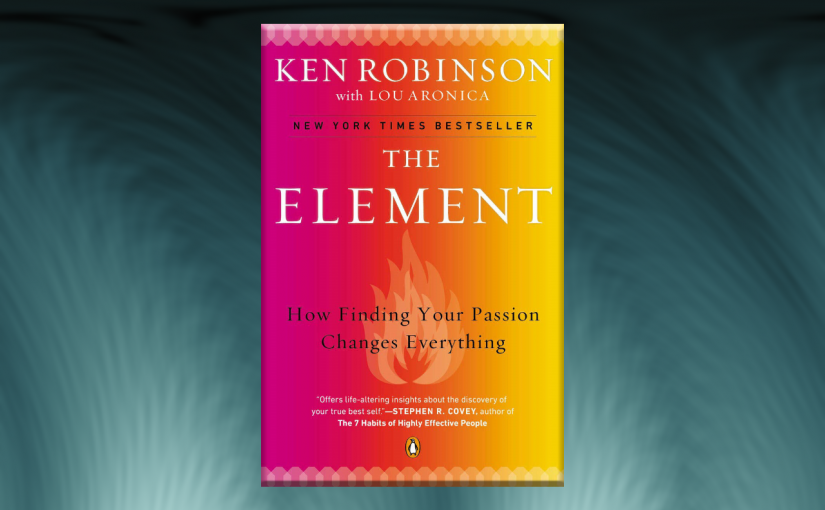I read this book because of Sir Ken Robinson’s TED talks. In a sense, the book is a big compilation of his presentations on the subjects of human intelligence and creativity. He defines the Element as “the meeting point between natural aptitude and personal passion”. To find one’s Element, he suggests, one also needs to have the right attitude and actively seek opportunities.
One of the key messages is that we should think of human intelligence as something much more than academic abilities. The list includes mathematical, linguistic, musical, spatial, kinesthetic, interpersonal, and intra-personal (knowledge and understanding of oneself). The three features of human intelligence are that they are diverse, dynamic, and distinct, which indicates that each person should seek to find his or her own unique Element.
Creativity, he defines, is applied imagination. It is “the process of having original ideas that have value”. It takes a considerable amount of time to develop an idea, so in this sense, it is a process. It also requires a medium, in the sense that creativity can manifest itself in all kinds of human activities such as literature, maths, sciences, music, and dance. The last and perhaps the most important feature is that one has to develop skills associated with using that particular medium, being writing, calculating, experimenting, singing, or dancing. The corollary is that the teaching of creativity should go hand-in-hand with the development of skills in that medium.
Just like his presentations, the book is filled with the characteristic British self-deprecating humour. My favourite one is the comparison of earth’s size with other planets and stellar objects in the universe. One version of this joke can be seen here.
There is one thing, however, that I think I have some disagreement. It is about his assessment of the MBTI (Myer-Briggs type indicator). He disapproves it on the ground that it tends to put people into boxes and thus limiting the possibilities. I have read the original book Gifts Differing by Briggs and Myers, and I think the idea behind MBTI is never to put people into boxes and to limit people’s potential. It is more about understanding how people’s talents may differ (thus the title Gifts Differing), which is precisely what Sir Ken teaches too. However, I do agree that the subsequent widespread use of MBTI, particularly by the human resource department to sort people into different categories automatically, ignores the dynamic nature of types and tends to have a deterministic view of types.
